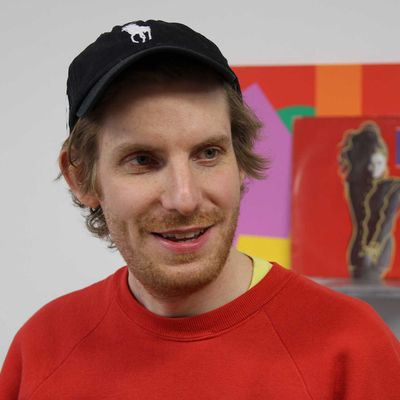
There are other names that come more readily to mind when one thinks of compositions for the piano: Rachmaninoff, Beethoven, Debussy. And while the world of classical music tends to remain entrenched in an era long gone, there have been some undeniable additions to the piano canon with the advent of electronic keyboards ÔÇö from everyone and everywhere like Madonna to Detroit techno ÔÇö however flimsy a contribution they may be. Leave it to wunderkind artist Cory Arcangel to consider this more closely with a set of new compositions entitled ÔÇ£24 Dances for the Electronic Piano,ÔÇØ which he recently released on SoundCloud and will be performed tomorrow night at the Metropolitan Museum of Art with pianist and accomplished composer Chris dÔÇÖEon.
ItÔÇÖs easy to forget that Arcangel started out as a student at Oberlin Conservatory for Music, even though his interest in the electronic piano is perfectly in line with much of his work and other interests (Photoshop, video games, Seinfeld). Arcangel had originally wanted to study electronic composition, and he still dabbles in it between big shows at the Whitney and the New Museum. ÔÇ£I had noticed a couple years ago that I would hear a different sound that was on the KORG M1 in a lot of pop music now,ÔÇØ Arcangel explained. ÔÇ£It got me thinking about how the sounds on these certain machines can take on a life of their own. TheyÔÇÖve been used by so many people that they have this whole history when you hear it. You donÔÇÖt hear a tinny, shitty sound; you hear all the previous songs you have loved.ÔÇØ Intrigued, he locked himself in a secluded studio in Norway (because of his wife, who works in Norway, he splits his time between there and New York) and began ÔÇö like all composers ÔÇö ÔÇ£to hammer it outÔÇØ for a couple of months.
Contrary to what you might hear when you listen ÔÇö because some of these riffs are going to sound awfully familiar if youÔÇÖve even stepped foot inside a dance club and waited for that beat to drop ÔÇö all of the piano dances are original. When asked if Arcangel looked to any traditional composers ÔÇö baroque or classical, say ÔÇö when writing these fuguelike variations, he laughed: ÔÇ£No, I was looking more toward, like, kind of semi-anonymous U.K. producers from the late ÔÇÿ80s and early ÔÇÿ90s and Belgian dance-music producers and Detroit dance-music producers and a little Madonna.ÔÇØ But then he allowed himself to switch his tone from playful to serious ÔÇö not unlike the way his art works. ÔÇ£The thing to mention is the Korg piano sound is 98 percent dance music with a piano breakdown,ÔÇØ he said. ÔÇ£I can only guess that when somebody used it, someone thought, Oh, that sounds great. And it became part of the language. Same with 808 ÔÇö you can turn on Hot 97 right now and nearly all of the music will have 808. They evoke so much, experientially; there is so much in these sounds.ÔÇØ
ArcangelÔÇÖs dances move with chronological momentum; the first dance songs touch on themes from the mid ÔÇÿ80s, and by the end, heÔÇÖs thoroughly enmeshed in the more layered remixes of the mid aughts. ÔÇ£When people started doing these piano breakdowns they were very simple ÔÇö all-white-keys kind of chord patterns,ÔÇØ he said. ÔÇ£But soon thereafter people started pasting and copying the same pattern in their computer. The harmony gets really messed up, and it gets really difficult to play because the fingerings are very weird. They would basically copy and paste patterns on a computer, and it changed the whole sound. Later on, with a lot of the Detroit stuff, it doesnÔÇÖt even sound like piano anymore ÔÇö they would have filtering, itÔÇÖs so harsh.ÔÇØ The album is played entirely by a computer, but lucky for the audience, tomorrowÔÇÖs performance will be played live by dÔÇÖEon (who will also be playing his own compositions). ÔÇ£YouÔÇÖll notice a big difference,ÔÇØ Arcangel said. ÔÇ£Every strike of a key is different when a human plays. It will have a different volume, different density, more life.ÔÇØ He chuckled, then added, ÔÇ£A human will get tired ÔÇö after seven minutes you can hear the human break down.ÔÇØ


